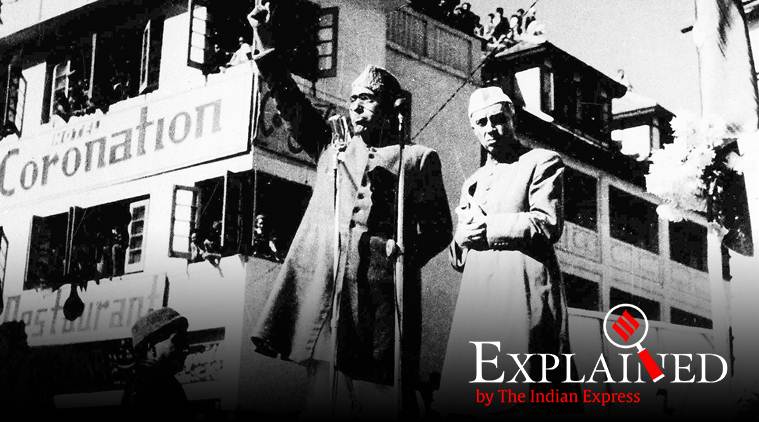Explained: A short history of Kashmir before the Mughals
Between 1326 and 1585, when the region was conquered by the Mughal Emperor Akbar, the original Kashmiri culture and society underwent profound changes.
 For more than 250 years after the reign of its last medieval Hindu king ended, Kashmir was ruled by an independent Muslim monarchy. (Express Archive)
For more than 250 years after the reign of its last medieval Hindu king ended, Kashmir was ruled by an independent Muslim monarchy. (Express Archive)
For more than 250 years after the reign of its last medieval Hindu king ended, Kashmir was ruled by an independent Muslim monarchy. Between 1326 and 1585, when the region was conquered by the Mughal Emperor Akbar, the original Kashmiri culture and society underwent profound changes. Kashmir became part of the Sikh Empire in the early 19th century, and ultimately passed under the Hindu Dogra kings of Jammu.
Who were the kings of the Kashmir Sultanate?
Shah Mir
Regarded as the first Muslim ruler of Kashmir, there are varying accounts about his rise to power. According to the early 20th century historian G S Sardesai, the Turkish-origin Shah Mir was in the courtroom of King Ranachandra, working as the chief of affairs. After Kashgar ruler Anandadeva overran Ranachandra’s kingdom, he had Muslim state employees, including Shah Mir, removed from their positions. Shah Mir subsequently led their revolt, which led to Anandadeva’s death in 1326.
In 1339, Shah Mir founded his own dynasty. He is said to have been a benevolent ruler who revoked several taxes. In 1349, Shah Mir handed over the kingdom to his two sons, Jamshed and Sher Ali.
Jamshed and Shahbuddin
A power struggle soon ensued between the two brothers, in which Jamshed emerged victorious, and adopted the title Alauddin. Upon his death in 1363, Sher Ali assumed the throne and ruled under the title Shahbuddin.
Shahbuddin led campaigns to the south, and his major feats included a victory over the Samma dynasty king of Sindh, and bringing the ruler of Kangra under his suzerainty.
Upon his death in 1386, Sher Ali was succeeded by the next-in-line Qutubuddin, who in turn was succeeded in 1396 by his son, the controversial Sikandar.
Sikandar
Sikandar is sometimes referred to by the epithet ‘Butshikan’, meaning the destroyer of idols. Several Hindu temples are said to have been destroyed during his reign, and many Hindus converted by force.
According to Sardesai, Sikandar was an astute ruler who managed to save Kashmir from plunder by Timur by accepting the overlordship of the Central Asian invader who came to India in 1398.
Upon Sikandar’s death in 1416, he was succeeded by son Amir Khan, who was soon deposed by his brother Shadi Khan in 1422; subsequently taking the title Zain-ul-Abidin.
Zain-ul-Abidin
Zain-ul-Abidin reversed many of Sikandar’s conservative policies. He allowed Hindus and Buddhists to practice their religion, and had many temples restored. He constructed lakes and canals. Zain-ul-Abidin was also a patron of art, literature, and poetry.
Muhammad and Fateh Khan
After Zain-ul-Abidin’s death in 1472, his successor Haji Khan alias Haidar ruled for a year. Haji Khan was succeeded by son Hasan, who ruled for a tumultuous 13 years, and left his minor son Muhammad in charge.
After years of courtroom intrigue, Muhammad was deposed by Fateh Khan, a grandson of Zain-ul-Abidin. After seizing the throne, Fateh Khan allied with the Delhi Sultanate ruler Sikandar Lodi, and resisted Muhammad’s attempts to dislodge him. However, Muhammad regained the throne when Fateh Khan died during a voyage in the south, and ruled until 1535.
After Muhammad, Kashmir witnessed uncertainty in the next fifty-year period, for a part of which it was ruled by the Chak dynasty. At the end of this period, Kashmir became a part of the expanding Mughal Empire under Akbar.



- 01
- 02



































